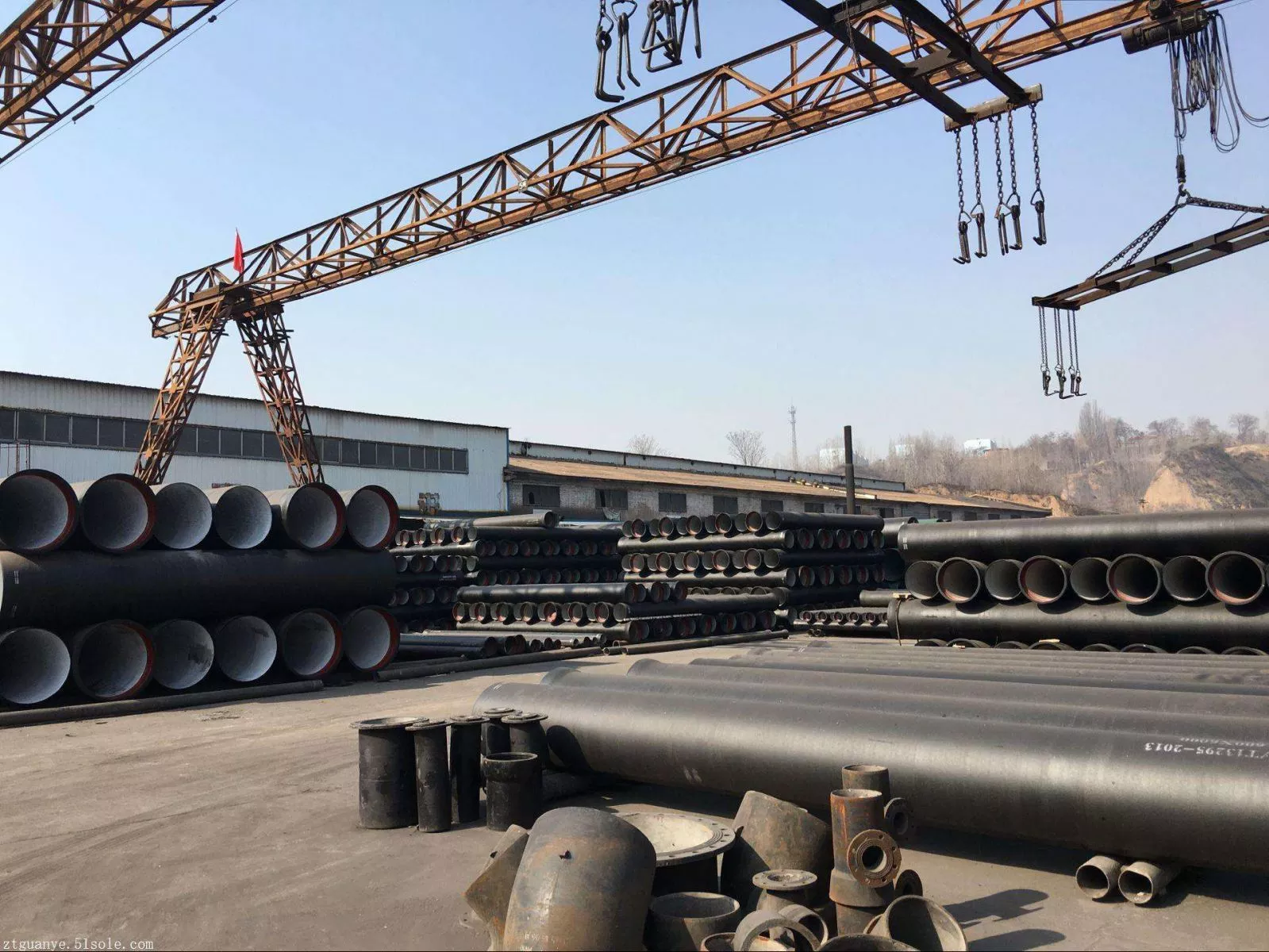Ductile Cast Iron Pipes are mainly used for transporting tap water and are the ideal choices for tap water pipes.
Mechanical Properties
Minimum tensile strength: 420/Mpa; minimum yield strength: 300/Mpa; minimum elongation: 7% .
GB / T13295-2008 ISO2531-2009
Diameter: DN80-DN2600
Advantages
When
ductile iron pipes are installed under the conditions of pressure generally below 6MPa, they have advantages of safe and reliable operations, low damage rates, excellent anti-corrosion and being convenient for construction and maintenance, etc. The newly developed "rock shield" series of
ductile iron pipes are very suitable for construction with trenchless, and they are widely used in the pipeline constructions which going through rivers, roads and buildings. "Zinc" series of
ductile iron pipes adopt spraying technique with special zinc-aluminum alloy, which improves their corrosion resistance and makes them widely used in soils with strong corrosion.
Disadvantages
Generally
ductile iron pipes are not used under conditions of pressure above 6MPa. We need to use machinery when installing
ductile iron pipes, because the pipe bodies are relatively heavy. We need to dig out all the
ductile iron pipes and lift them to the heights where we can place clamps on the pipes so as to stop leakages, if there are leakages after pressure tests.
Installation Guides of Ductile Iron Pipes and Fittings for Water Supply
1. We need to consider that if the sandy soils can fill the bottom of the
pipes to ensure uniform force in the processes of pipe ditches. When we ditch the interface, we should leave enough room so that we can make full use of force in the operation process. In addition to special circumstances, the shapes of the ditches should be straight lines and the bottom surfaces of ditches should be at the same levels. If we use machines to ditch, we should leave soil layers with thickness of 20cm to 30cm not ditched. And these soil layers should be cleaned to the elevations by the workers.
2. Clean inner parts of bell ends and outer surfaces of spigots with brushes and the clean cloth. There should not be foreign bodies on the parts where we place rubber seals.
3. For
ductile iron pipes with DN80mm to 300mm, we should shape the rubber seals into hearts; put them in bell ends; tightly embed them in pedestals. For ductile iron pipes above DN400mm, we should shape the rubber seals into 8 shape, and embed them in pedestals.
4. Lubricate inner surfaces of the seal rings and spigots, and choose non-toxic and tasteless alkaline lubricants, for example, soapy water.
5. Insert spigots into bell ends and make them coaxially contact with the seal rings. We must correctly straighten spigots and make the central axle lines of connected pipes or pipe fittings coincide. If there is great resistance in the inserting processes, we should stop immediately and pull out the pipes to check the positions of rubber seals, bell ends and spigots. Connect to the pipes again after finding out the reasons.
6. When the meeting points are installed, adjust offset angles according to their diameters.

